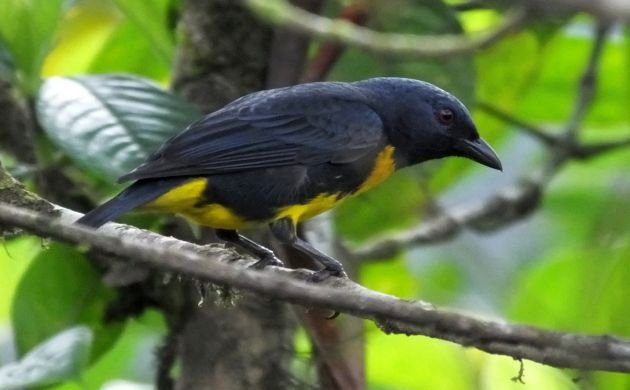
“Target birds”. The term can foster excitement but is easily contentious. It would be uber cool to lay eyes on a rare lifer, on species that only seem to live on the pages of a field guide but isn’t that somewhat discriminatory? Aren’t all birds worth watching? And why spend time only looking for one or two species when those hours could be used to put binos focused on a few dozen?
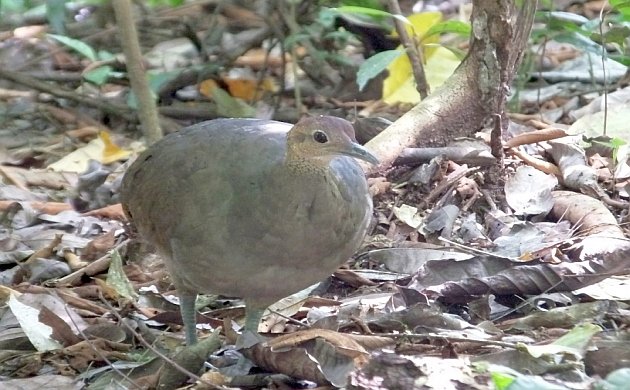
Although it’s feasible and fairly easy to see Great Tinamou at some sites in Costa Rica, in most other places, the time investment needed to see one usually relegates it to the “heard only” category.
There’s nothing wrong with appreciating and watching every bird but there’s also nothing wrong about going to great efforts to see lifers only found in dreams. When it comes down to it, birders can partake in the hobby, lifestyle, or passion however they want (as long as they don’t harm themselves, others, or the birds).
In defense of target birding, in most cases, sacrificing sightings of other species isn’t even necessary to see our “most wanted”. As is often the case in Costa Rica and elsewhere, the rare species are found in the birdiest, high quality habitats. Looking for Bare-necked Umbrellabird? A birder needs access to large areas of mature forest that also offer up chances at seeing glittering flocks of tanagers, checking out the tail bobbing behavior of cool antbirds, and glassing a hawk-eagle or two.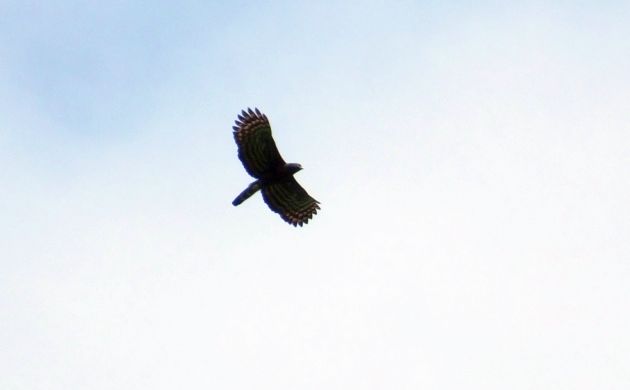
This is what a Black Hawk-Eagle shape looks like.
While waiting for that big weird cotinga species to appear, other birds will also come into view because when birding quality habitat, there’s plenty to see!
Not to mention, regarding target birding, if some of those spectacular species can’t be seen elsewhere, then you probably should try to see them when you have the chance. In no particular order, these are my top 25 picks for target birds of Costa Rica.
Why 25 and not ten? In making this list, I quickly discovered that it was a challenge to pick just ten or even a dozen birds. There are more than 50 regional endemics to choose from, and many birds are easier to see in Costa Rica than many other places because of access to habitat and/or lack of hunting pressure. So, I settled on 25 and even that leaves off birds that could easily make it into someone’s else’s top target species wish list for Costa Rica! Taking the above-mentioned factors into consideration and whether the bird had a unique appearance or behaviors, here they are, a suggested top 25 target species list for Costa Rica:
Great Curassow
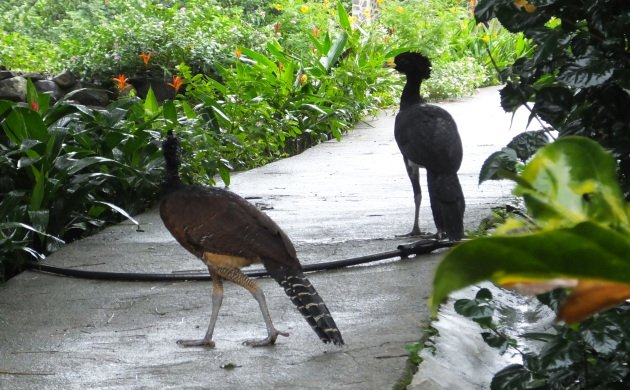
No turkeys up in here, just a big wild and crazy Cracid! Thanks to better protection from hunting, this fancy bird is tame and easy to see at many sites in Costa Rica. In some spots, this amazing bird even visits feeders.
Buff-fronted Quail-Dove
We have several quail-dove species in Costa Rica, this one is only found in cloud forest here and in western Panama. It’s actually fairly common, the Monteverde cloud forests can be especially good.
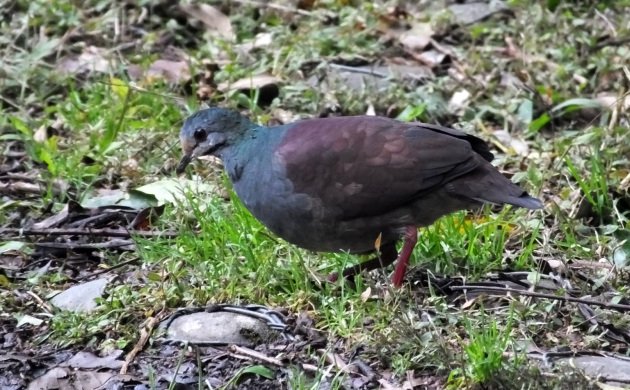
Like this one that was in the parking lot.
Mangrove Hummingbird
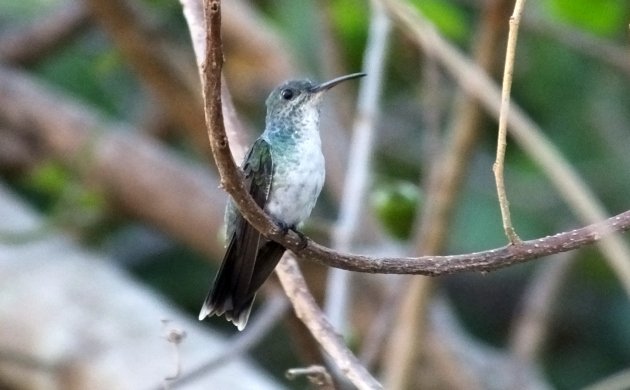
Not as fancy as others of its kind but much more rare. A likely relict of times with lower sea levels, this uncommon bird only lives in Tea Mangroves of western Costa Rica.
Fiery-throated Hummingbird
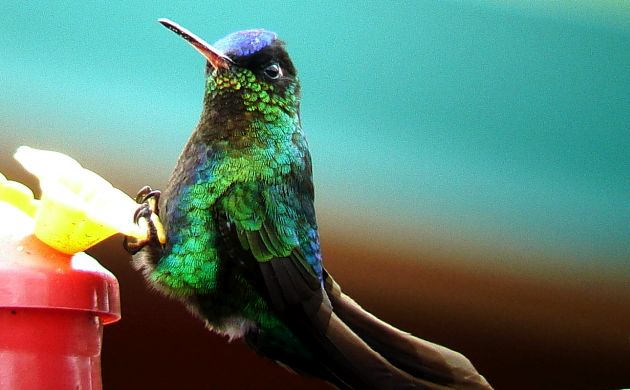
It’s hard not to include a bird with a name like that. It does have a fiery throat but only in certain light. Common at high elevations in Costa Rica, the best places to check out the full Fiery-throated show are in the Talamancas (Quetzal Paradise and La Georgina for example).
Scintillant Hummingbird
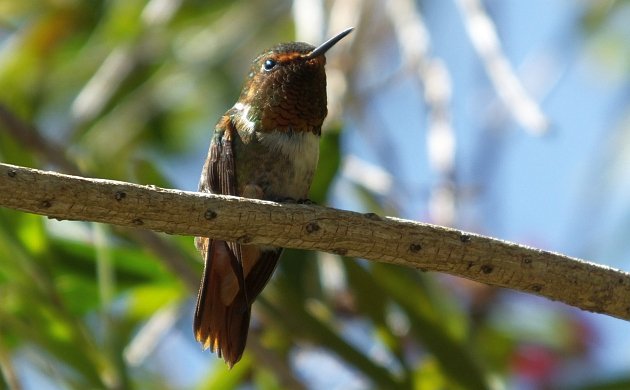
This sprite made it onto the list because its the smallest bird in Costa Rica and is maybe easier here than in western Panama.
Snowcap
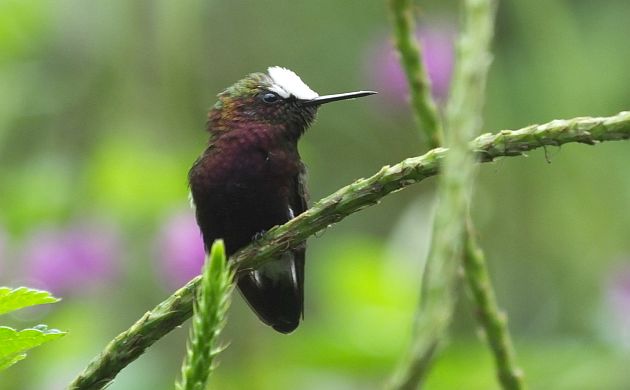
A perennial favorite and how not? I mean, please, this bird is too unreal. It looks like a flying piece of candy or something that escaped virtual reality. See it in life and the crown nearly glows white.
White-crested Coquette
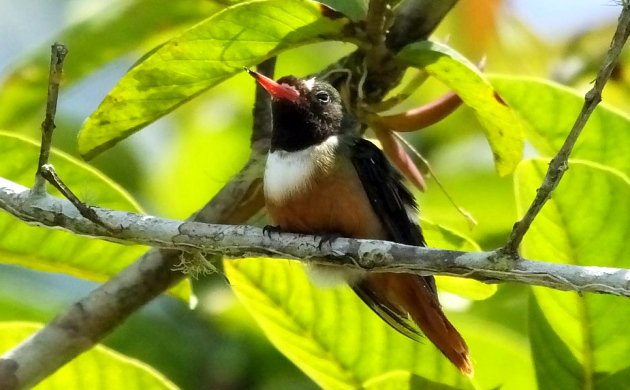
Our final fancy hummingbird on the list might be the most exquisite in Costa Rica. It does range into western Panama but is far from easy there (nor in Costa Rica for that matter).
Baird’s Trogon
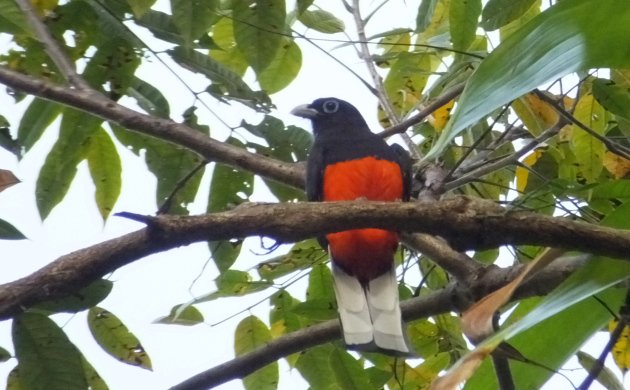
All trogons are iridescent beauties, the bold combination of deep purple-blue, crimson, and white make this Near Threatened very near endemic especially coveted. Watch for it in rainforest of the South Pacific slope.
Resplendent Quetzal
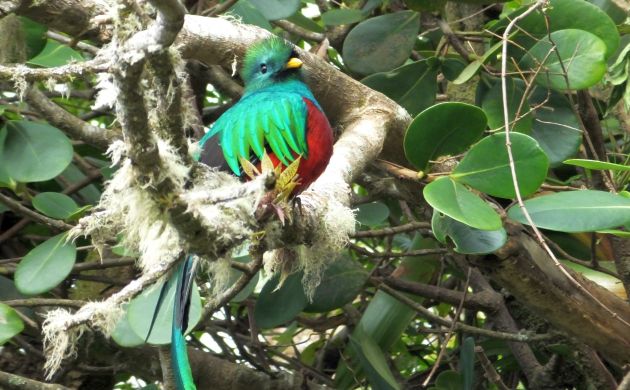
While this amazing bird can also be readily seen in Guatemala, western Panama, and a few other places, ease of access in Costa Rica and fantastic appearance put it onto this list.
Rufous-winged Woodpecker
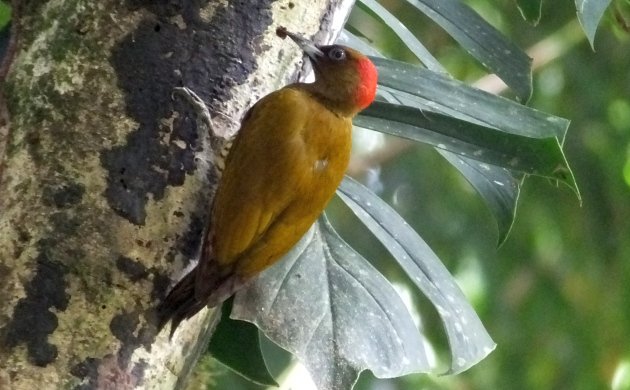
Not as fancy as some of the other birds, this range restricted woodie is nonetheless much easier to connect with in Costa Rica.
Great Green Macaw
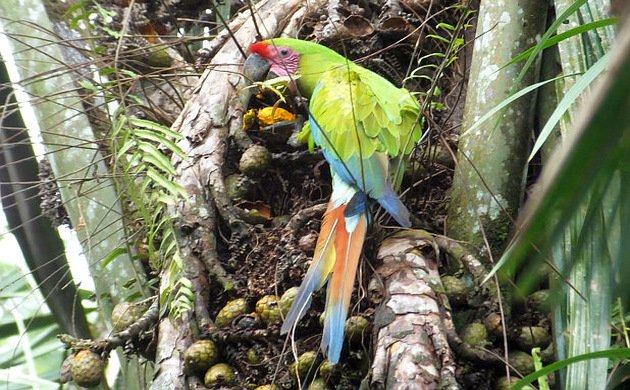
Another spectacular bird that can also be seen in the Darien and a few other sites is still most accessible in Costa Rica.
Yellow-naped Parrot
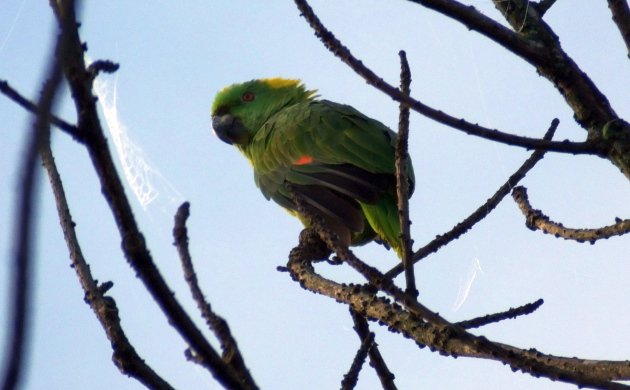
Endangered and awesome, it’s pretty easy to experience this big parrot in the Pacific lowlands of Costa Rica from Tarcoles north to near Nicaragua.
Bare-necked Umbrellabird
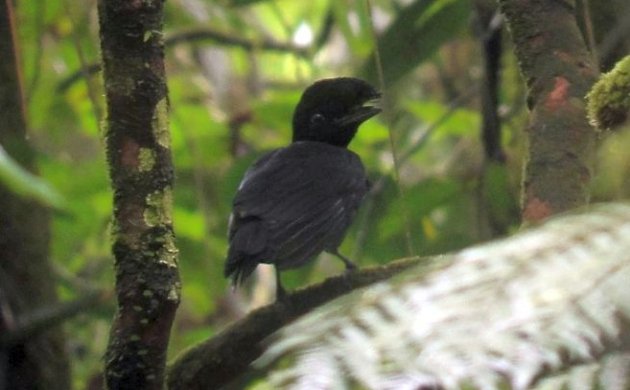 A serious world mega and even more so because this species is truly scarce and without a doubt, truly endangered. It’s not easy to see in Costa Rica nor western Panama but a birder can’t connect with it anywhere else.
A serious world mega and even more so because this species is truly scarce and without a doubt, truly endangered. It’s not easy to see in Costa Rica nor western Panama but a birder can’t connect with it anywhere else.
Yellow-billed Cotinga
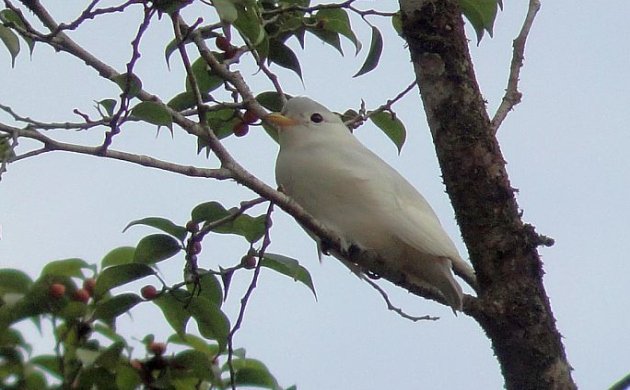
Another endangered species, this lovely snow-white bird with the yellow bill needs rainforest adjacent to mangroves in southern Costa Rica and adjacent western Panama. It has an estimated decreasing population of 150-700 individuals.
Turquoise Cotinga
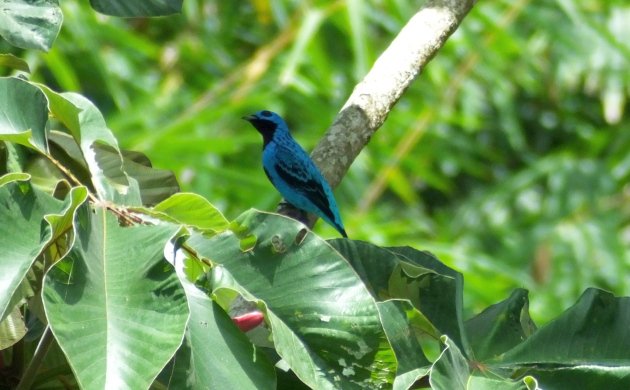
Sharing much of the same range as the Yellow-billed Cotinga, the beautiful blue and purple Turquoise Cotinga is an uncommon species of rainforest, mostly in southern Costa Rica.
Snowy Cotinga
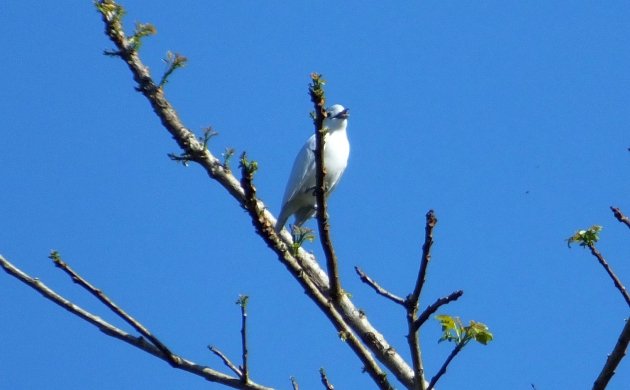
Our last cotinga on the top 25 list is at least more regular than the other ones in Costa Rica. Watch for it perched in the canopy of Caribbean lowland rainforest.
Tawny-chested Flycatcher
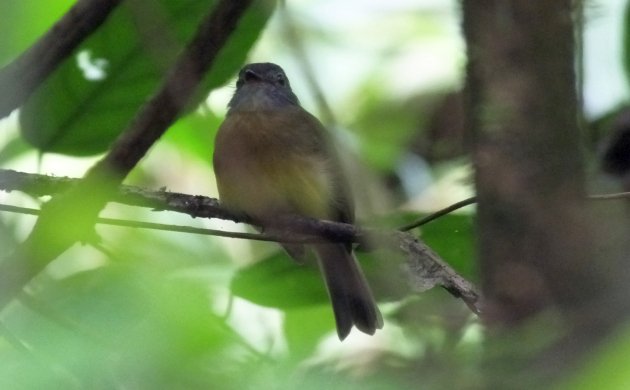
This cool flycatcher is a local bird of old second growth with vine tangles in the lowlands and foothills of the Caribbean slope. The most reliable places to see it are in Costa Rica, especially at Rancho Naturalista and the Lands in Love hotel.
Timberline Wren
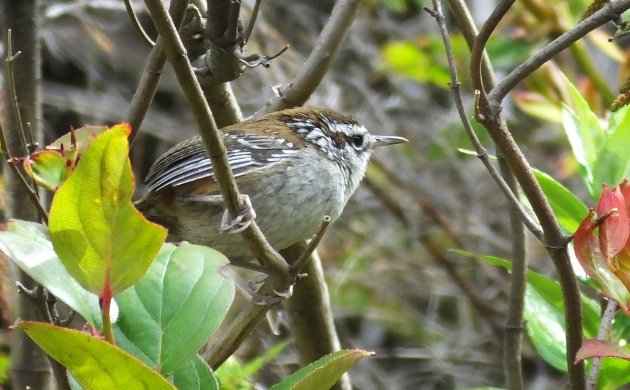
A high elevation specialist, true to its name, this species lives in timberline habitats in Costa Rica and one area in Panama.
Volcano Junco
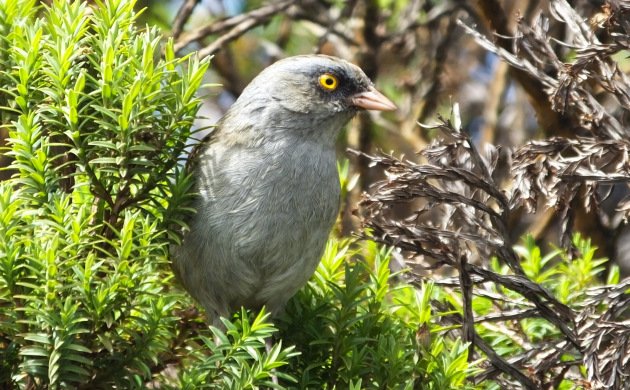
Sharing some of the same habitat with the Timberline Wren, this southernmost junco species gets angry in paramo habitats of Costa Rica and one site in Panama.
Wrenthrush
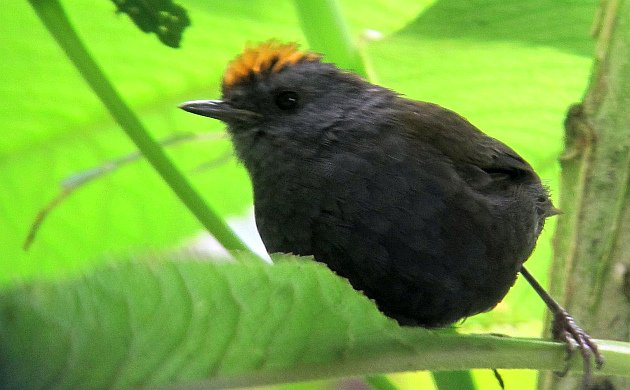
If you were wondering what a “Wrenthrush” was, you are far from alone. This former aberrant wood-warbler is so weird, it has been given its own family. It’s a skulker but is fortunately also common in many cloud forest sites of Costa Rica.
Flame-throated Warbler
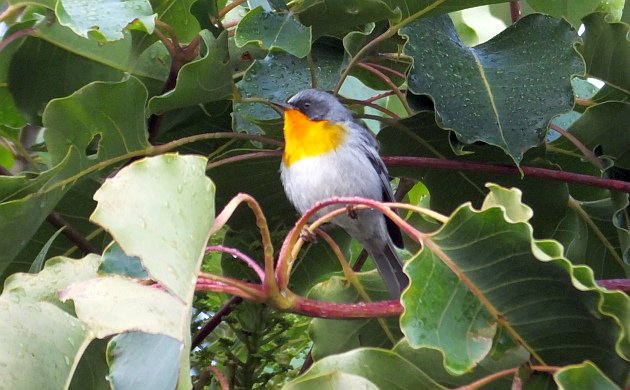
Another bird with an intriguing name and yes, it looks just as super cool! Formerly considered a parula, it turns out to be the sister species of the Crescent-chested Warbler, a high elevation species of Middle America with a similar song.
Black-cheeked Ant-Tanager
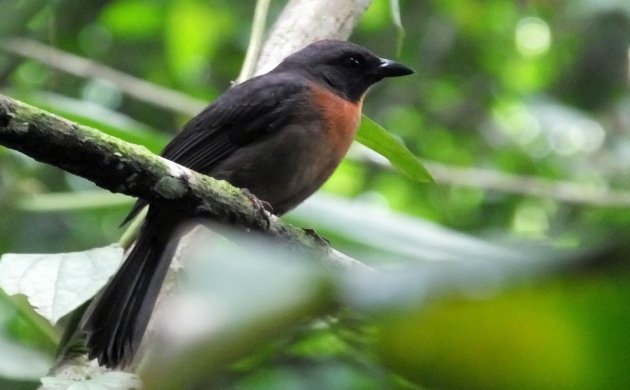
One of the few endemics on the mainland of Costa Rica, this species can only be seen in rainforest habitats of the Osa Peninsula and Golfo Dulce lowlands.
Blue-and-Gold Tanager

I suppose this special bird is blue and gold and it of course looks fantastic. This northernmost representative of the Bangsia genus (like the Moss-backed Tanager of Ecuador) is locally common in mossy mature middle elevation rainforest of Costa Rica and western Panama. It is regular at more than one site in Costa Rica.
Nicaraguan Seed-Finch
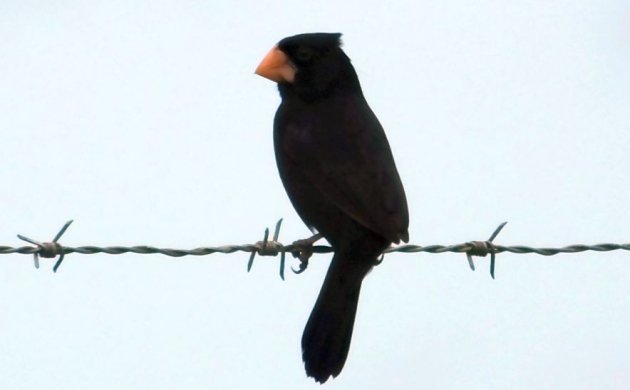
A very local bird with a restricted range, this finch (actually a tanager) with the big pinkish bill is most easily found in marshy field habitats in the Caribbean lowlands of Costa Rica.
Cabanis’s Ground-Sparrow
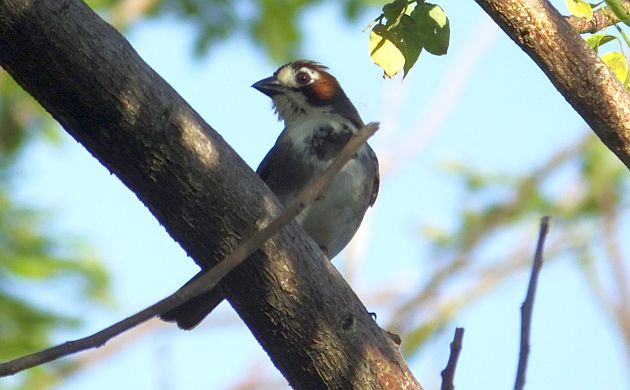
Last but far from least, this special one is the southernmost Melozone towhee (think Canyon, California, and Abert’s Towhees) and likely the most endangered. It only lives in brushy habitats of central Costa Rica and has become scarce because it can’t live in housing developments (what much of its former range has become). Watch for it in coffee farms, especially with shade trees, and in riparian zones.
Honorable Mentions- there are a lot of these, it’s just easy to see so many birds in Costa Rica!
Tinamous
Black Guan
Black-breasted Wood-Quail
Ornate Hawk-Eagle
Semiplumbeous Hawk
Crakes (because now there is good gen and guides to find them)
Chiriqui Quail-Dove
Volcano Hummingbird
Purple-throated and White-bellied Mountain-gems
Black-bellied Hummingbird
Charming Hummingbird
Owls (because they merit target status everywhere)
Lattice-tailed Trogon
Keel-billed Motmot
Fiery-billed Aracari
Scarlet Macaw
Red-fronted Parrotlet
White-chinned Swift
Bare-crowned Antbird
Chiriqui Foliage-gleaner
Three-Wattled Bellbird
Gray-headed Piprites
Black-throated and Canebrake Wrens
Silky-flycatchers
Large-footed Finch
Sooty-faced Finch
Ochraceous Pewee
Rufous-browed Tyrannulet
Silvery-throated Jay
Olive-crowned Yellowthroat
This list doesn’t mean that a birder should only look for these birds, just that it’s a good idea to see them when visiting Costa Rica. For example, Silver-throated Tanagers are eye candy but they are common and are easily found in many places. Enjoy them at feeders but when birding a mixed flock, keep looking for the much less common and local Blue-and-Gold Tanager. Good luck seeing these and hundreds of other birds in Costa Rica!













I’m always trying to get a few birders to come to Mexico instead of Costa Rica. But… wow. Serious bird envy.
You convinced me, Pat. I need to get back there!
@Paul- Plenty of reasons to visit Mexico too!
@Mike- The birds are here waiting for you, would be great!